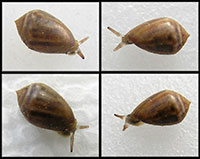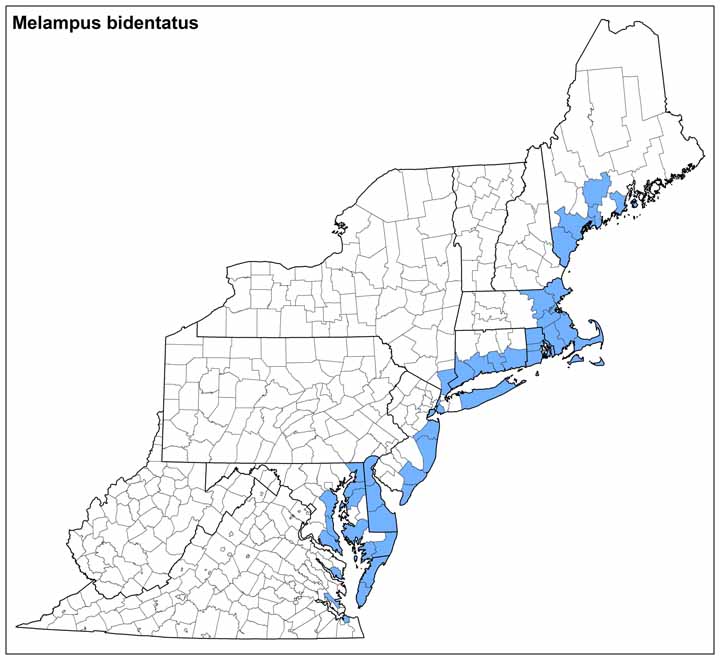Land Snails

melcof.jpg)
Photo(s): Melampus bidentatus animals and shells © Bill Frank.
Click photo(s) to enlarge.
Melampus bidentatus (Say, 1822)
Family: Melampodidae
Common name: Eastern Melampus
Identification
Height:10-15 mm
Whorls: 5-6
The shell of Melampus bidentatus is heavy and ovate-conical in shape (Abbott, 1974). The apex is low, and the whorls are tall and broadly shouldered. The upper shouldered have a microsculpture of incised spiral lines. A narrow aperture runs for most of the whorl height, with 2 lamellae on the inner columella, and 1-4 raised lirae within the outer lip. The shell color is tan or light brown with 3-4 broad,darker brown bands. Maine specimens may be unbanded or vertically banded (Hotopp, pers. obs). The animal is reddish-brown.
Ecology
This snail is an amphibious salt-marsh dweller of bays and estuaries. It is an air-breather, or pulmonate, that can survive for extended periods upon vegetation above or beyond the water. It consumes rotten vegetation, especially saltmarsh cordgrass. Melapus bidentatus shells may be encountered along old saltmarsh hayfields, marsh edge roadbeds or walking trails.
In Massachusetts, snails reached reproduction size at 5mm, engaging in a six-week reproductive period in May-July (Apley, 1970). These hermaphroditic snails laid in saltwater an average of 39 gelatinous egg masses, each averaging 850 eggs. Hatching of veligers occurred after 16 days, followed by 2-6 weeks as planktonic larvae. Individual snails lived 3-4 years.
Taxonomy
Synonyms of Melampus bidentatus are M. corneus, M. lineatus, and M. redfieldi.
Distribution
Melampus bidentatus lives from the Maritime Provinces of Canada to the Texas Gulf Coast. In Virginia it is reported from coastal counties.
Conservation
NatureServe Global Rank: G5
Ken Hotopp 1/2013
Update KPH 5/2018



